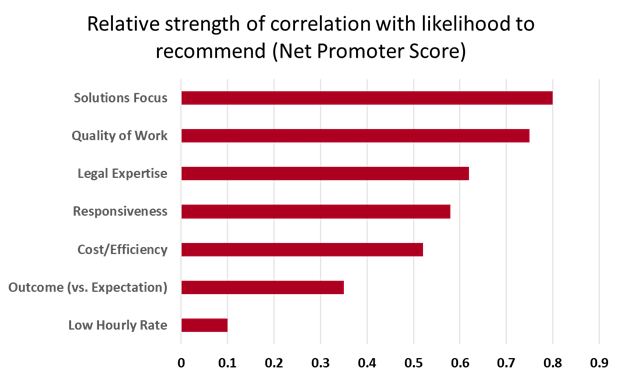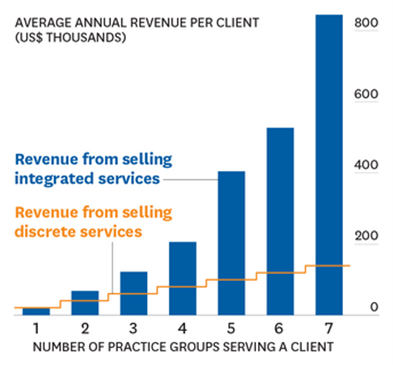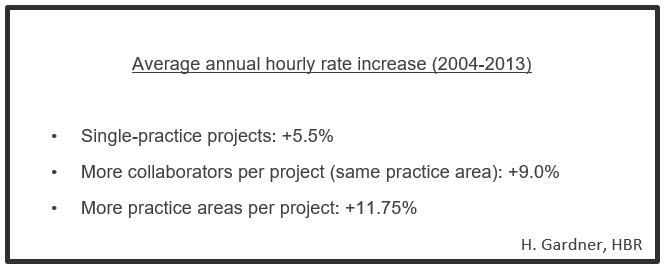The following article is by Janet Stanton, Partner, Adam Smith, Esq.
Note: This article was recently sent to our subscriber list. (See what you’re missing??)
Now that we are squarely in an era of new possibilities and are thoroughly inoculated to the notion that, yes, things really can change, we wanted to introduce the concept of “strategic client management.” This will be the first of a don’t-know-yet-how-many-part series exploring the topic. We’ll start broadly – with definitions, why this matters, and underlying principles.
What is strategic client management?
Put simply, strategic client management is the intentional servicing of your clients to nurture longer-term, more profitable relationships. Because this is more about how lawyers and firms approach their work, there is not a strict “canon” of what’s included as part of strategic client management at firms. That said, without a true client service orientation, no set of initiatives under the aegis of a “strategic client management” will succeed.[1]
The primacy of client service is supported in many studies. This data set is from research out of Altman Weill.
| Reasons for switching law firms | |
| Client service | 51.7% |
| Legal expertise | 40.6% |
| Lower fees | 35.7% |
| Managing matter efficiency | 26.6% |
To be clear, what this says is that inadequate client service is worse in clients’ eyes than inadequate legal expertise. Put another way, a brilliant practitioner may lose a client if he is a jerk. The truth of the matter is that there are lots of very good lawyers out there who will also provide good client service – so why should anyone put up with so-so servicing?[2]
Moreover, as you see here and below (and in many other studies), despite all the hand wringing we hear from firms about client push back on fees, higher-order aspects of client service significantly outweigh lower fees in importance to clients.[3]
What is the goal of strategic client management?
It is intended to institutionalize key clients by being more intentional in all aspects of client service – which includes, but goes well beyond the expert practice of law. In an era of sluggish, if any, growth, and, more recently sky-high economic uncertainty, firms need to treat their clients as the assets they are – or other firms will happily step in. And, what clients are looking for are business solutions that go beyond expert legal opinions.
The following graph, using data from AdvanceLaw underscores the paramount importance to clients of a “solutions focus” which outranks “quality of work,” “legal expertise” (again!) and “responsiveness;” trouncing “cost efficiency” and “low hourly rates.”
Strategic client management is a mechanism to deliver these more comprehensive solutions.
How does it benefit law firms and individual practitioners?
A substantial body of research and case studies strongly support the value of strategic client management to enhance the financial performance and sustainability of law firms.[4] This approach benefits law firms in many ways. Certainly growth in revenue and profitability is key. Further, it is well recognized (both in Law Land and many other industries) that revenue from current clients is more profitable than that from new clients. Strategic client management increases client retention and, therefore, leads to a more stable and sustainable firm. There is, therefore, less reliance on pitching elusive new clients. Also firms are more likely to pre-empt RFPs from their current clients – therefore firms can be more strategic about which new clients they do choose to pursue.
This approach also offers training and leadership development opportunities for junior partners, associates, paralegals and business professionals.
Gardner’s research neatly distills the financial benefits of collaboration into one chart.
To unpack this a bit, the orange line is the revenue generated by individual practice areas serving an individual client. The blue bars are the increases in firm revenue when multiple practice areas service the same client. Even if your firm does not have multiple practice areas, there is evidence showing that increasing the number of partners meaningfully serving a client increases revenue and profitability as well as building client stickiness for higher levels of retention.
So to this, partners may say, “that’s great for the firm, but what about me?” Gardner’s research goes further and demonstrates that individual rates for lawyers increase as they collaborate more and more broadly across the firm.
Now that we’ve established that strategic client management is good for clients, firms and individual practitioners, what’s involved? (and we promise it is much easier than the actual practice of law.)
Before we get to specifics (in subsequent pieces), let’s discuss some underlying principles of strategic client management:
- Cross-serving, and
- Teamwork
Cross-serving versus cross-selling
At the core of strategic client management is increasing business from current clients, be it involving more partners (or other fee earners), business professionals at the firm, additional practice areas, services or offices. This generally does not happen on its own. Firms need to make intentional efforts to expand client relationships.
In response to this, many firm leaders resort to continually exhorting their partners to “sell, sell, sell,” thinking that that will get the job done. The problem is that this falls on mostly deaf ears because most partners absolutely hate to sell (and most clients hate to be “sold.”) So, what’s to be done?
Consider cross-serving instead of cross-selling.
This is far more than a semantic difference. It’s truly a headset change: cross-serving starts with the client’s needs, cross-selling starts with the firm’s wants. Stop and think about the implications of this for a minute or so; this is counter to much advice given to law firms. Cross-selling is about getting the client to buy what your firm has to offer, regardless of their needs or how well they are being served by others. Cross-selling is basically along the lines of, “Want to meet our new tax guy?”
Cross-serving requires a bit more thought and preparation than cross-selling, making it much more effective, and, we’d think, satisfying than cross-selling. Cross-serving starts with a deep understanding of the client’s business and their priorities – and how those priorities meaningfully intersect with what your firm can provide. This will allow for the development of a sound, solutions-oriented business proposal tailored to the client’s priorities; truly serving the client; not selling.
Does this take more time and effort? Yep – it does. To quote Philip Stanhope, 4th Earl of Chesterfield, “Whatever is worth doing at all, is worth doing well.” Cross-selling is often just going through the motions; cross-serving brings something of value to clients, which will redound positively to the firm and the practitioner; building longer-term, more profitable relationships. Firms should be willing to invest in the resources to help make this happen rather than just expecting their partners to do this on their own.
Collaboration & teamwork
If not abundantly clear by now, lawyers are going to have to climb out of their self-imposed solitary confinement and work with other people. As has been recognized, in an era of increasing specialization (which is a good thing), lone practitioners simply cannot, on their own, deliver comprehensive solutions to clients. And, it’s not just teaming with other lawyers, either. Holistic solutions require intellectually-diverse, client-facing teams of lawyers and business professionals (who have expertise and credibility in highly germane areas, such as pricing, that lawyers do not). For some reason teamwork and collaboration scare the bejesus out of lawyers – which has forever baffled us (and many others smarter than we are).
In a two-part series, Lawyers and teamwork, the inestimable Bill Henderson lays out the reasons behind and plausible solutions to this evergreen issue.[5] In Part I, Bill quotes David Burgess, Publishing Director of The Legal 500, a global research company that conducts research, in part, among thousands of corporate clients each year. When asked (and I paraphrase), “What do most firms get wrong?” David answered, ““Teamwork. The clients want their outside lawyers to work together as a team—for the right hand to consistently know what the left hand is doing.”
Doesn’t seem to be an unreasonable ask; in fact it feels like a pretty low bar (and every other industry and professional service sector gets this in spades).
Again, collaboration is more than just good for the firm, it has tangible benefits to individual practitioners, as well. Another pretty dramatic data set from Heidi Gardner:
In this chart, the best collaborators (10%) (black line) at law firms continued to thrive during and after the 2008-2009 recession. The second tier (11-30%) (blue line) had a bit of a dip in 2009, but then pretty much recovered. The remaining (70%!) (red line) saw their business fall off a cliff in the recession and it has not come back any way close to pre-recession levels.
Clearly, collaboration can provide a safety net in the worst of times.
Perhaps something to consider in our current, uncertain times.
For now, we’ll end here. Subsequent pieces will get into specifics of strategic client management. For the impatient among you, we have more on this on our site.
And, as always, dear readers – we’re interested in hearing your take on this.
[1] There are other monikers for this, most frequently, “client relationship management.” In some cases those initiatives are highly executional in nature and, instead, we want to underscore the importance of a more intentional, ahem, strategic approach. We also want to avoid confusion with CRM software products – which is most-assuredly not what we’re talking about.
[2] This finding that client service trumps legal expertise (and just about everything else) in importance to clients is confirmed in the next chart and in many other studies. This might suggest that law firms rethink lawyer bios which tend to focus almost entirely on legal expertise. Perhaps use bios to demonstrate how lawyers solve clients’ problems; short case studies anyone?
[3] What this says to us is that in the absence of good client service, clients will focus on costs; an uncomfortable fact most law firms would prefer to not think too hard about.
[4] Heidi Gardner’s Smart Collaboration: How Professionals and Their Firms Succeed by Breaking Down Silos is the ur-source of data and insights on the business value of collaboration at professional service firms, with a focus on law firms.
[5] Full disclosure – Bill is a good friend.






